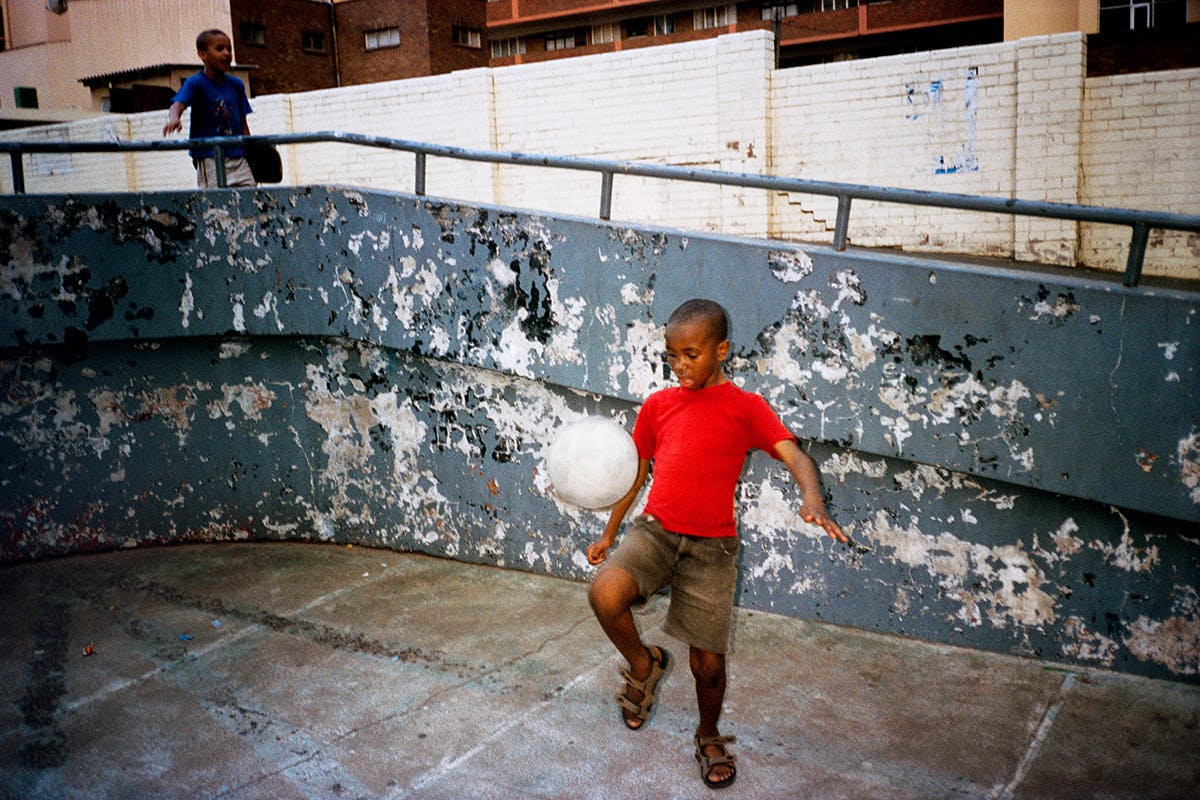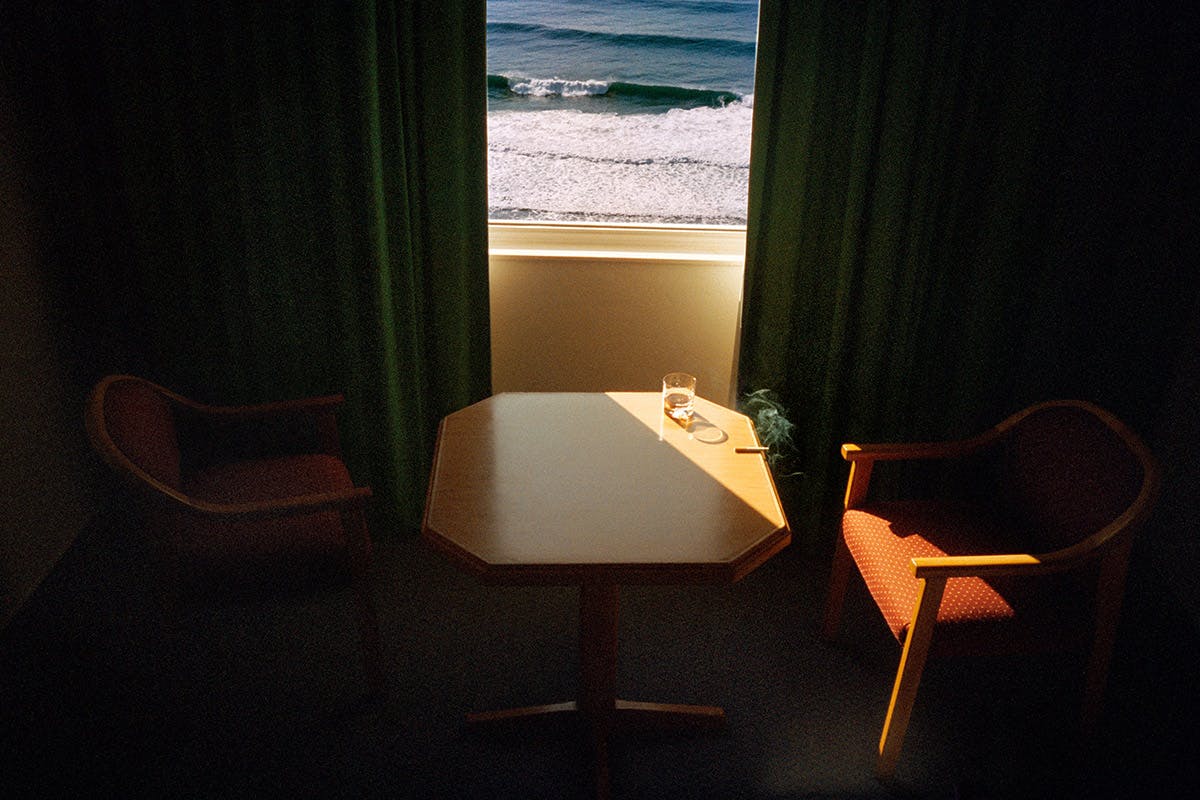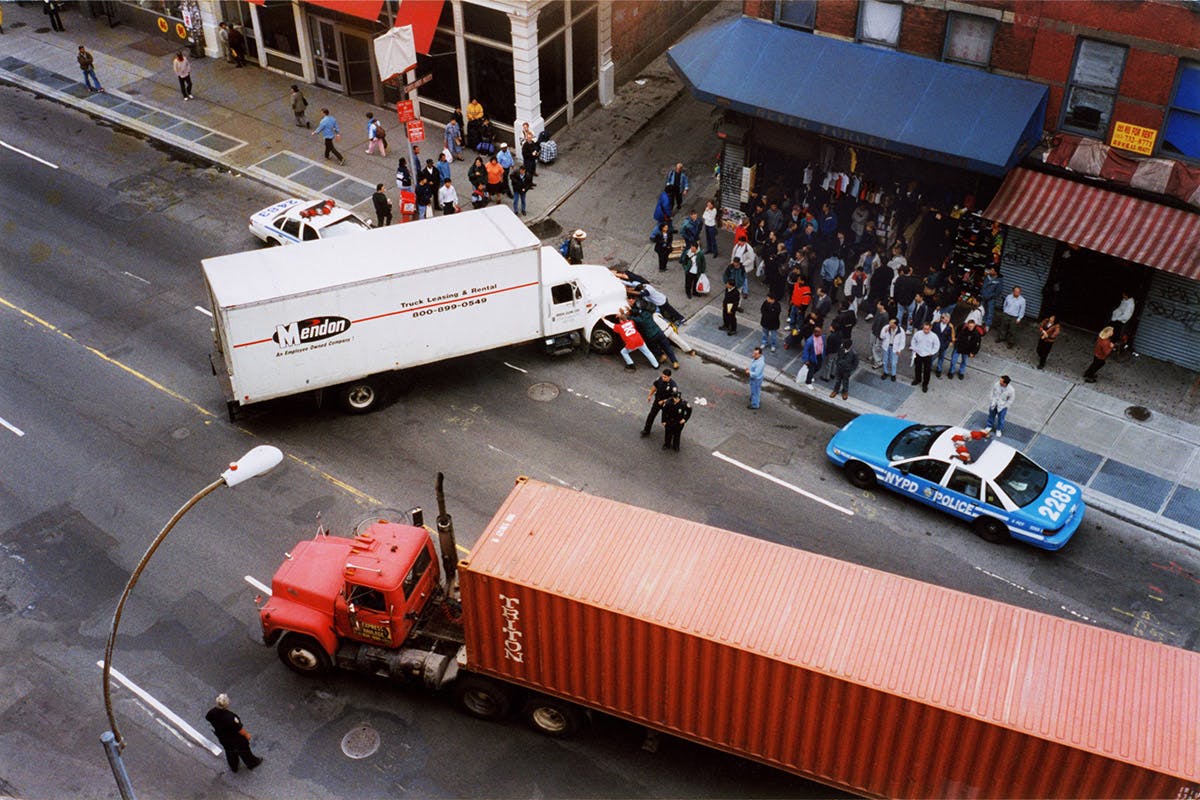As a professional skater (among many others), Jason Dell has definitely seen his fair share of amazing sights from all walks of life. With a haunting new study of his Prince Street depiction, we can also get a glimpse at some of these landmarks. In this FRONTPAGE interview, Dill takes us through the creation of his intimate new project.
For the outside world, Jason Dell makes a lot of things happen. Collages, photographs, clothing, drawings, paintings, upside-down hanging cop cars, the list goes on. As a professional skater, he has been part of several video projects, including the one featured at Alien Workshop’s Photosynthesis (2000). You can describe him as prolific, but as he himself tells me, 60% of his time is going from medium to average, thinking about what to do next.
Now, Dill’s “Next” is a hardcover photographic study titled Prince Street (Images from Africa, People in Memory, Places Forgotten)Releases online and in-store on April 20th. in 250 pages, Prince Street It is a massive visual archive documenting decades of personal photography. Interestingly, skateboarding is intentionally omitted, making the book more than a visual diary of his travels and experiences, and displaying his talent for illuminating the plot piece found in ordinary life. Switch between black and white, color, point-and-shoot, standard 35mm cameras, Prince StreetThe narrative is not linear or even chronological, but rather a thoughtful juxtaposition of moments that remain connected no matter how subtle or corrupt the images are.

We talked to Dill about his process and bringing him in Prince Street to life:
I grew up watching skaters like you do new things in videos and photos… Seeing how you all stay creative gives me the same feeling, you know what I mean?
Thanks. Honestly, I feel lazy, lethargic, silly, immature, and stupid, but in terms of the things I do, 60% of it is just staring at a wall trying to think of what I’m going to do next.
You work in so many different mediums, what sparked you to write a book through photography?
In the early 90’s I started to travel skateboarding. I turned professional in ’94, and went to New York, Tokyo, London, Paris and all over America. And I started taking pictures, as you do, just to take pictures. It’s that easy. And I kept doing it, not with the intention of writing a book – and I certainly never made a book of this size. It’s a big, big book – but I’ve done it. I went to a lot of places and kept taking pictures, I didn’t take it seriously.
I had made some other smaller appliques and books, so I did a few things before. When I show people my pictures whose opinions I respect, they tell me things were good, and maybe I should actually make it into a book. My negative was a mess, only in shoeboxes. I’m really amazed that they’ve survived all the moves I’ve made over the years. I lost some negatives from Africa and some other negatives, but the ones I got were in really good shape.

How far back do the pictures stretch?
From 1997 to 2015.
Was it filmed with different cameras or do you have a primary medium to use?
All different cameras, but they are all movies. There is no number in it. To not take anything away from digital content, I didn’t do it that way. I’m not a tech expert – the most technical thing I know how to do with a computer is to turn on the scanner. This is. I can barely do Zoom meetings and shit.
He told me about going out in the late ’90s and early 2000s in New York. Felt like everyone has those disposable cameras that you will catch in the bodega. Were you into it?
Yes, I started with the disposable stuff around ’93 or ’94…I think it was new at the time. I haven’t used any of the ones in the book, but I love those. In ’97 I borrowed a friend’s camera – there are some pictures in the book with that camera. I don’t even remember the damn movie I used, just black and white. It was the Nikon…the one you were using in your high school photography class, the super guide. I took a photography class in high school before I dropped out when I was 17…and it worked out. I’ve never taken an art class and I think it shows in my art. [laughs]
In the late 1990s, Olympus and the sliding shield came to the fore. I got one of these and it became a priority to bring it with me. And by priorities, I mean, my priorities were to go out every night, black out, and take pictures. I did it for ten years in New York. I’m not necessarily proud of that. You wasted a lot of fucking time, but we got a lot of funny pictures.

I chose five pictures that I thought might be interesting to talk about if you’re feeling down. The first picture I saw was really amazing to me. Reminds me of a picture of William Eggleston. It’s the second view of the ocean from a hotel with only two chairs, a table and a cigarette.
Yes, the wine. Yes, this is such a damned tradition of William Eggleston. [laughs] I loved that room I was in. She was in Durban, South Africa, and it’s a really wild place. This was a stark imitation of the image of an Eggleston plane with a drink and a window. You know, as you do.
Can you tell me about this shot in New York City where there are people pushing this box truck and there is a big crowd outside watching?
This is Broadway and Channel. We lived on the canal for a long time over Burger King. I loved what I saw outside of my escape fire every day. Canal Street was pretty wild when he looked back then. It was just another era, I think. What I love about that picture is all the people helping and then the old cop cars. I love those old cop cars, they remind me of that time period so much. But the one thing I really liked about that photo is that everyone is there at the moment it was taken. There weren’t really cell phones at that time. I picked it up in ’99 or 1998, and the only cell phone anyone ever owned was a Nokia brick. Nobody takes pictures, it’s just humans helping – humans watching a moment in New York.
How about a picture of a subway with the two people bent over?
I think this is my favorite photo I’ve ever taken. It doesn’t sound cliched, but to me, that really sums up the New York of that time period. I would say this photo was taken in 2001. It’s the young people in New York who are trying to get it – get it. New York is for young people. It is good to live when one is young for a period of time. I think it just captures the feeling. There are two sides to that – they obviously did everything they did that night to get there. They look so desolate, they look so resentful.
I used to take pictures in a way I would never do again. I was young. It’s an intrusion – I’ll totally admit it. There is a picture in the book of a man on his knees with his head on the floor and a woman standing over him in Miami. I just saw her kick him in the face. I ran and took three pictures of them real fast and ran away. I will never take pictures like this again. Talking about it in my introduction to the book, I was going to feel weird walking up and taking a picture of someone but the two guys in the picture you’re talking about clearly had no idea. I’m not sorry about that, but being older and looking back, I think, “Wow! I was really striving for it.” I never thought I would show these pictures. They just sat in shoeboxes. But you know? I really like this though. There is a lot to come out of these two kids.
Love this hotel selfie. Can you talk about that?
Yes, it’s a hotel in Los Angeles called Beverly Laurel. When I was going to visit from New York I would stay there. I snapped that picture in the mirror, and that’s Miles Davis on TV. My dad went to prison when I was eight – it was kind of like the last time I saw her. In 2005 I was going to California on a trip and my girlfriend at the time thought it would be a good idea for me to have it. So I ended up calling him at this hotel by phone. I loved staying at this hotel very much. It’s still there.
The last time I wanted to talk about it was this shot of someone holding a mirror to the sky above their face. It is very surreal.
This is my friend Sean in Brooklyn…maybe in 2005 or 2006. Yeah, just fucking with a mirror and hanging out. I love how the clouds look. That was the distance between these two buildings in Green Point, at the time. I always thought it was kinda cool, but over the years people have told me it’s a cool thing.
Are there any other images you’d like to discuss or something about the book in general that we could touch on?
Not really specific images. We’ve modified from thousands to what’s in the book. It’s over, there’s no chronological order. There are colors, there are black and white, and there are disposables. I never had a driver’s license, so a lot of the pictures I took were outside the car window from the passenger seat.
I said something in the introduction to the book – I was really insecure writing it – but I didn’t try to appear as a serious photographer. I made one photo, which is the cover photo and inside of the Earl Sweatshirt album DorisAnd I’m very proud of that. At the end of the introduction I say: “The images in this book are some regret, some nudity, some sadness and some absolute happiness.”

How did you choose the title?
I shot the cover in Johannesburg, it’s this little kid and I loved the way he was standing. He was in this truly royal position. The shop behind it says “Prince Street” and I’ve lived on Prince Street in New York for a long time – 199 Prince. I had that apartment when I traveled to Africa. I stayed in Africa for three months, and that was a very sure development in my eyeballs, mind and soul. Africa is an insanely beautiful place and the people are phenomenally alive. So, Prince Street over his head… shit, I’ll name the book Prince Street. I thought it sums up what the book is about well.
Prince Street (Images From Africa, People Remember, Forgotten Places) will be released on Wednesday, April 20th at Fucking Awesome stores in New York, Los Angeles and online. Limited copies will be available at select international specialty libraries: Arcana Books on the Arts, Culver City; Print Article, New York; Tris statement.

Comments
Post a Comment